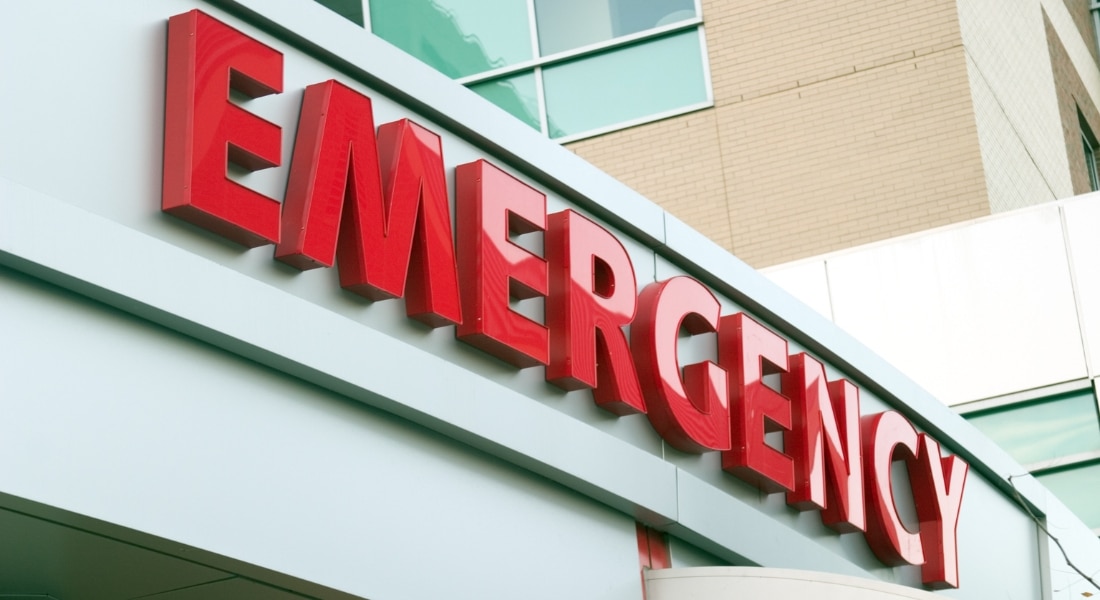TV dramas have a tendency to show us the worst-case scenarios from hospital emergency rooms, but it’s the routine reality of ER visits that offer cautionary tales for us all.
While some emergencies are unavoidable — think heart attacks, strokes, and traumatic injuries — we can all take a few more precautions in our everyday lives that can spare us an unexpected trip to the hospital.
For example, any seasoned ER doctor will warn against group trampoline sessions, biking without a helmet, or petting an unfamiliar dog. But there’s one home accident that’s a cut above, says Christopher Kennedy, MD, medical director of the emergency department at Methodist Celina Medical Center, the city’s first hospital, which began accepting patients in March 2025.
“The most common self-inflicted injuries I see are definitely those in the kitchen,” Dr. Kennedy says. “It is common for those who are cutting too quickly to accidentally cut their fingers.”
Dr. Kennedy lays out the dos and don’ts of visiting the ER, including when it’s critical to call 911 and when it might be better to visit your family doctor or an urgent care clinic.

NO CLOSE SHAVES
Chopping vegetables can get dicey, especially when handling a slippery avocado or cutting toward your hand — always a bad idea.
But Dr. Kennedy says there’s one kitchen implement that’s drawn more blood than just about any other: the mandolin slicer.
“That blade is incredibly and sometimes deceptively sharp,” he says. “I often see people who take the skin off one of their digits. This can lead to a large abrasion with bleeding that can be difficult to control.”
It’s that uncontrolled bleeding that brings patients running for the ER, where the staff may use skin glue or clotting powder to stop the flow. Even then, it can take time for the bleeding to stop, and after that, there’s the lingering threat of infection.
“When you get a large open lesion like this, where the skin of your fingertip is missing,” Dr. Kennedy says, “it opens you up to an infection risk four to 10 days after the initial injury.”

SUDDEN SYMPTOMS
The sight of blood is enough to drive many people to the ER, but too many patients shrug off sudden symptoms that should not be ignored.
“Intense pain usually leads to a diagnosis that, at the very least, requires prescription management for outpatient treatment, if not admission to the hospital for inpatient care,” Dr. Kennedy says.
He cites a host of “sudden onset” symptoms and why they might warrant a trip to the ER:
- Not just chest pain: Most people recognize angina as the most common symptom of heart disease, but heart attacks can also mimic indigestion or even a toothache. Physicians like Dr. Kennedy recommend lab work and an electrocardiogram (EKG) for evaluation, especially for patients with a history of heart disease or hypertension.
- Abdominal pain: Sudden pain in the abdomen could be triggered by a host of problems, from a urinary tract infection to appendicitis. If the pain doesn’t go away or gets worse, it’s time to get help. Severe pain could signal an obstruction by a gallstone or kidney stone. “Rapid onset of abdominal pain usually needs evaluation for kidney stones,” Dr. Kennedy says.
- Sudden headache: Migraines and sinus headaches are routine for many people, but patients should not ignore such symptoms because they could be a sign of meningitis, stroke, or bleeding in the brain. “Sudden onset headaches can be a symptom of ruptured aneurysms, and usually need a CT scan of the brain for assessment,” Dr. Kennedy says.
- Leg pain: Don’t be too quick to shrug off leg pain as a cramp or “charley horse” because it could also be deep vein thrombosis (DVT) or peripheral arterial disease. “Pain in an extremity could be a sign of a blood clot causing limb ischemia if no trauma is involved,” Dr. Kennedy says.

EMERGENCIES CAN’T WAIT
All too often patients who may be suffering a life-threatening emergency choose to drive to the ER have a friend or family member drive them. That could be a mistake.
“I’ve seen patients who tried to drive to the hospital and ultimately did not make it,” Dr. Kennedy says. “Some with heart attacks have gone into unstable arrhythmias and crashed.”
Paramedics are uniquely equipped to perform lifesaving treatment on the way to the ER and to alert trauma, stroke, or cath lab teams that a patient in need is on the way.
But the patient isn’t the only life at risk in the event of a medical emergency.
“Not only does the patient get delays in their care,” Dr. Kennedy says, “but they are putting other drivers at risk if their condition worsens en route to the hospital.”
Not every medical issue is cause for a visit to the hospital, of course, but it’s better to be safe than sorry because emergencies can’t wait.
“I would always recommend calling 911 anytime a patient or their family is concerned about a life-threatening condition,” Dr. Kennedy says.






